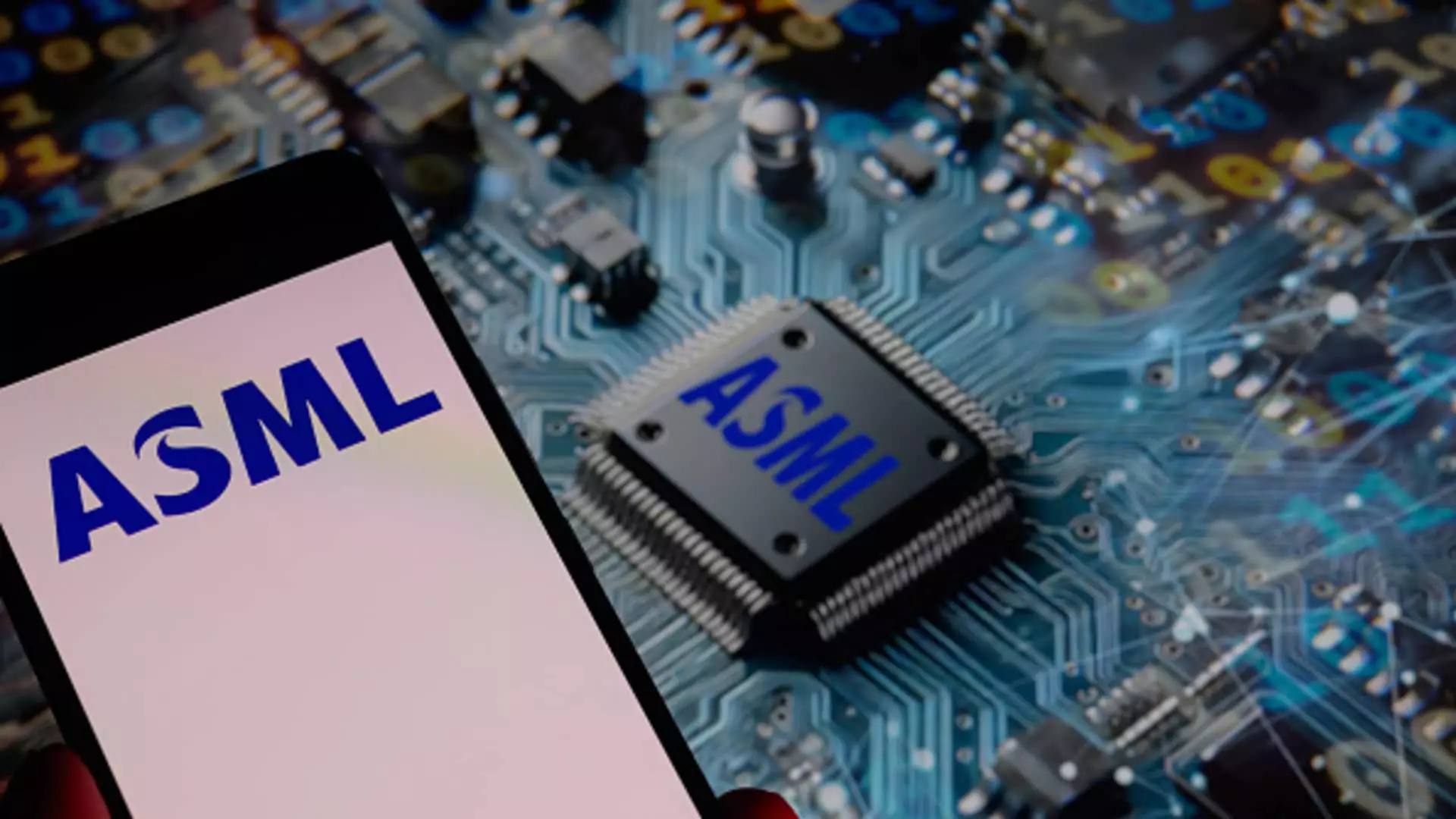In a stark reflection of the volatile landscape of the semiconductor market, ASML has witnessed a staggering erosion of over $130 billion in value within a single year. Once perceived as a bastion of stability, the company saw its shares soar to unprecedented heights, reaching more than 1,000 euros in July of the previous year, resulting in a market capitalization peaking at approximately $429.5 billion. However, the tides have turned dramatically, and as recent market closes have shown, that valuation has descended to under $297 billion. This downturn underscores the fragility that exists within the tech supply chain, especially given that ASML is a pivotal player in semiconductor manufacturing.
The ramifications of export restrictions imposed by the U.S. on China have cast a long shadow on both ASML and its competitors. As geopolitical tensions escalate and trade policies fluctuate, investor confidence has plummeted. The uncertainty wrought by these restrictions has not only affected ASML’s bottom line but has rippled through the broader semiconductor sector. Analyst Stephane Houri articulated this sentiment, pointing out the pervasive apprehensions surrounding U.S. restrictions that have significantly impacted companies across the industry.
The Impacts of Tariffs and Export Controls
The semiconductor sector has long been a battleground for trade frictions, with tariffs emerging as a double-edged sword that can either protect domestic markets or stifle global supply chains. The U.S. administration’s aggressive posturing towards China has created an atmosphere rife with anxiety, leading companies to second-guess their investments in chip production. The looming threat of additional costs via tariffs only exacerbates these concerns.
ASML is at the forefront of this tumultuous narrative, with a strong focus on innovation. They manufacture cutting-edge tools necessary for creating the most advanced chips, yet they find themselves boxed in by international policies that prevent them from capitalizing on the burgeoning Chinese market. The company’s recent forays into high numerical aperture (High NA) EUV machines exemplify their commitment to innovation; however, the inability to penetrate the Chinese sales channels is a significant setback.
Adapting to Changing Demand Dynamics
Houri’s observations about potential over-investment in artificial intelligence resonate deeply. As companies rush to integrate advanced technology, there’s a burgeoning question about whether the projected demand for semiconductors aligns with reality. The precarious balance between opportunity and overzealous investment creates a minefield for ASML and its contemporaries. Despite holding a monopoly on the production of EUV machinery, the vulnerability to shifts in market demand poses a legitimate threat to ASML’s revenue streams.
ASML’s CEO, Christophe Fouquet, has publicly acknowledged the looming proportional drop of their business in China by 2025. This admission highlights a grim outlook, with the prediction that the relationship with one of the world’s largest tech consumers will only worsen. The consequence of restricted market access not only hampers current revenues but also threatens future growth trajectories as they become increasingly reliant on other markets like Samsung and Intel, who themselves face their pressures.
Analysts’ Optimism Amidst Pessimism
Despite the overwhelming challenges facing ASML, a glimmer of optimism shines through in analysts’ projections. Compiled data suggests a target price of over 779 euros, indicating a potential upside of about 17%. This can be viewed as a testament to confidence in the intrinsic value and future growth trajectories of the company, highlighting that even in a climate of uncertainty, seasoned analysts recognize the underlying strength of the firm.
However, the lingering question remains whether this optimism is a reflection of reality or simply wishful thinking. As external pressures mount due to geopolitical strains, it begs the inquiry: can ASML navigate its way through these turbulent waters?
The prospect of a trade agreement between the U.S. and Europe could potentially mitigate some of these pressures, offering a glimmer of hope for the beleaguered semiconductor industry. Still, until concrete actions are taken, the specter of uncertainty looms large over ASML and the wider market. Such dynamics evoke a cautious approach to investing; success hinges not just on product innovation but on astute navigation of geopolitical chess games.
While ASML is undoubtedly a key player in the semiconductor landscape, the intricate web of tariffs, export restrictions, and changing market demands injects a degree of risk that investors must carefully consider.


Leave a Reply